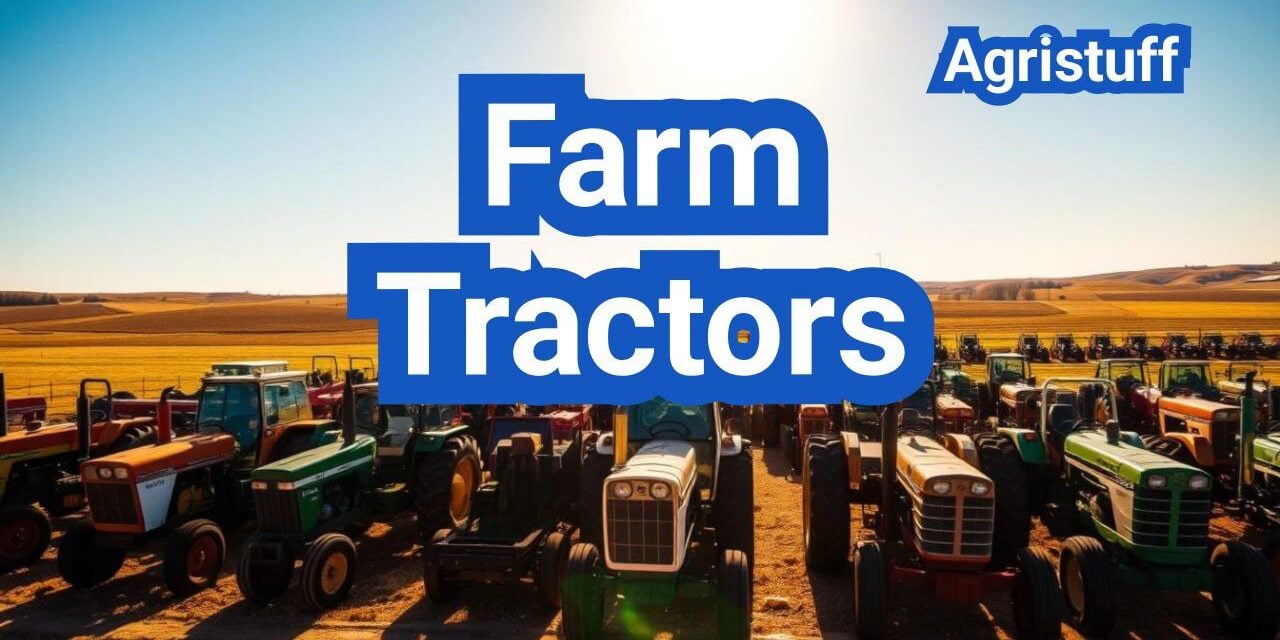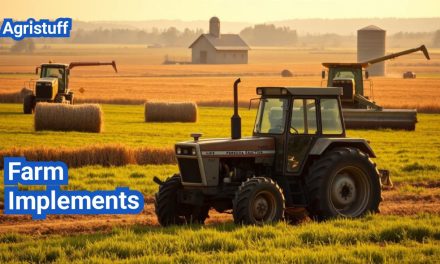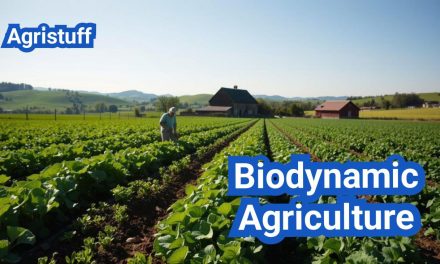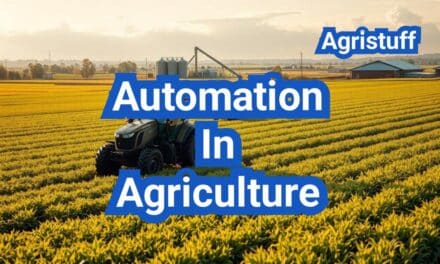Choosing the right farm tractor is crucial for the success of agricultural operations. With various types and models available, understanding the key features is essential.
The horsepower classes and transmissions are critical factors to consider when selecting a tractor. The right combination can significantly impact productivity and efficiency.
Farmers in the U.S. have a range of options, from traditional diesel-powered tractors to innovative electric farm tractors. The best tractor for a small farm depends on specific needs and requirements.
Key Takeaways
- Understanding horsepower classes is vital for selecting the right tractor.
- Transmission types significantly impact tractor performance.
- Electric farm tractors offer a promising alternative to traditional models.
- Assessing specific farm needs is crucial for choosing the best tractor.
- Considering the size and type of operation helps in selecting the appropriate tractor.
Understanding Modern Farm Tractors in American Agriculture
Modern farm tractors are the result of decades of development, enhancing farming efficiency and productivity. The agricultural landscape in the United States has transformed significantly since the introduction of the first tractors, with advancements in technology and design playing a crucial role in this evolution.
The Evolution of Farm Tractors in the USA
The history of farm tractors in the USA is marked by continuous innovation, from the early steam-powered engines to the sophisticated, technology-driven machines of today. Early tractor development focused on improving power and reliability, gradually replacing horses and manual labor.
The introduction of the internal combustion engine marked a significant turning point, offering greater flexibility and efficiency. Over time, tractors evolved to include features such as hydraulic systems and power take-off (PTO) capabilities, further enhancing their utility on farms.
How Tractors Have Transformed Farming Efficiency
The impact of tractors on farming efficiency has been profound. By mechanizing tasks that were previously done by hand or with the help of animals, tractors have significantly reduced labor requirements and increased productivity. Modern tractors, equipped with advanced technology such as GPS and precision farming tools, have further optimized farming operations.
The efficiency gains from using tractors are not limited to the field operations themselves but also extend to the management of farms. With the ability to cover more land in less time, farmers can manage larger operations, contributing to the growth and consolidation seen in the agricultural sector.
Types of Farm Tractors for Different Agricultural Needs

Different farming tasks require different types of tractors, each with unique features and capabilities. The choice of tractor depends on the specific needs of the farm, including the type of crops, the size of the operation, and the terrain.
Compact Utility Tractors
Compact utility tractors are versatile machines designed for small to medium-sized farms. They are ideal for tasks such as mowing, tilling, and hauling. These tractors are typically smaller and more maneuverable, making them perfect for farms with limited space or for use in orchards and vineyards.
Utility Tractors
Utility tractors are larger than compact tractors and offer more power. They are suitable for a wide range of tasks, including plowing, tilling, and loader work. Their versatility and power make them a popular choice for many farmers.
Row-Crop Tractors
Row-crop tractors are designed for large-scale farming operations. They feature high ground clearance and are capable of handling heavy loads. These tractors are ideal for row-crop farming, where high clearance is necessary to navigate between crop rows.
4WD and Articulated Tractors
Four-wheel drive (4WD) and articulated tractors are built for challenging terrains and heavy-duty applications. 4WD tractors provide power to all four wheels, improving traction in difficult conditions. Articulated tractors have a pivoting joint that allows for greater maneuverability, making them suitable for complex farming operations.
| Tractor Type | Key Features | Ideal Use |
|---|---|---|
| Compact Utility Tractors | Small size, maneuverable, versatile | Small farms, orchards, vineyards |
| Utility Tractors | More power, versatile | General farming tasks, plowing, tilling |
| Row-Crop Tractors | High ground clearance, heavy load capacity | Large-scale row-crop farming |
| 4WD and Articulated Tractors | Improved traction, maneuverability | Challenging terrains, heavy-duty applications |
Horsepower Classes Explained: Finding Your Power Sweet Spot
Horsepower classes for farm tractors range from sub-compact to row-crop tractors, each with its unique applications and benefits. Understanding these categories is essential for farmers to select the most appropriate tractor for their specific needs.
Sub-Compact Tractors (Under 25 HP)
Sub-compact tractors are ideal for small-scale farming operations, landscaping, and property maintenance. These tractors are characterized by their compact size and versatility, making them suitable for tasks that require maneuverability in tight spaces.
Key applications: Small farm tasks, landscaping, property maintenance.
Compact Tractors (25-50 HP)
Compact tractors offer a balance between power and maneuverability, making them suitable for a wide range of tasks, from tilling and plowing to hauling and loader work. They are particularly useful for medium-sized farms and orchards.
Benefits include: Versatility, ease of handling, and sufficient power for various tasks.
Utility Tractors (50-100 HP)
Utility tractors are designed for more demanding tasks and larger farming operations. They provide the power needed for heavy-duty applications such as plowing, tilling, and operating larger implements.
Common uses: Heavy-duty farming, plowing, tilling, and operating large implements.
Row-Crop Tractors (100-200 HP)
Row-crop tractors are high-powered machines designed for large-scale farming operations, particularly for row-crop farming. They feature high ground clearance and are optimized for use with wide implements.
Advantages: High power output, high ground clearance, and compatibility with wide implements.
By understanding the different horsepower classes and their applications, farmers can make informed decisions when selecting a tractor that matches their operational requirements, thereby optimizing their farming efficiency and productivity.
Understanding Tractor PTO Horsepower and Its Importance

Understanding the concept of PTO horsepower is essential for farmers to maximize their tractor’s performance. PTO horsepower is a measure of a tractor’s ability to power implements through the power take-off shaft.
Engine HP vs. PTO HP: What’s the Difference?
Engine horsepower and PTO horsepower are two related but distinct measurements. Engine horsepower refers to the raw power produced by the tractor’s engine, while PTO horsepower is the actual power delivered to the implement through the PTO shaft. The difference between the two is due to power losses in the transmission and other drivetrain components.
Key differences:
- Engine HP is the total power produced by the engine.
- PTO HP is the usable power delivered to the implement.
How PTO HP Affects Implement Performance
The PTO horsepower of a tractor directly impacts its ability to efficiently operate various implements such as plows, tillers, and balers. A higher PTO HP generally means better performance, especially for demanding tasks.
To illustrate the impact of PTO HP on implement performance, consider the following table:
| Implement | Required PTO HP | Typical Task |
|---|---|---|
| Rotary Tiller | 20-40 HP | Tilling soil |
| Mower | 15-30 HP | Cutting grass or crops |
| Baler | 40-80 HP | Baling hay or straw |
Matching PTO HP to Your Farm Tasks
To optimize tractor performance, it’s crucial to match the PTO HP to the specific tasks and implements used on your farm. This involves assessing the power requirements of your implements and selecting a tractor with sufficient PTO HP.
Steps to match PTO HP:
- Identify the PTO HP requirements of your implements.
- Choose a tractor with a PTO HP rating that meets or exceeds these requirements.
- Consider the range of tasks you’ll be performing and the frequency of use.
Transmission Types: Hydrostatic vs. Powershift vs. CVT
Understanding the differences between hydrostatic, powershift, and continuously variable transmissions (CVT) is essential for farmers to optimize their tractor’s performance and efficiency.
Hydrostatic Transmissions: Benefits and Limitations
Hydrostatic transmissions use fluid pressure to transmit power, offering smooth and precise control over the tractor’s speed and direction. This makes them ideal for applications requiring frequent stops and starts, such as loader work or mowing.
However, hydrostatic transmissions have some limitations. They tend to be less efficient than other transmission types, particularly at high speeds, and can generate more heat, requiring adequate cooling systems.
Powershift Transmissions: When They Excel
Powershift transmissions utilize a combination of clutches and gears to provide multiple speed options without the need for manual shifting. They are well-suited for tasks that require a range of speeds, such as plowing and tilling.
Powershift transmissions excel in applications where the load varies significantly, as they can handle heavy loads and provide good control over the tractor’s speed.
Continuously Variable Transmissions (CVT): The Modern Option
CVT transmissions use a combination of belts, pulleys, and electronic controls to provide infinite speed adjustment within a given range. This allows the engine to operate at its most efficient speed, optimizing fuel consumption and reducing emissions.
CVTs are particularly beneficial for tasks that require a consistent speed, such as planting and harvesting. They also offer improved operator comfort due to the absence of discrete gear shifts.
Selecting the Right Transmission for Your Operation
When choosing a transmission type, farmers should consider several factors, including:
- The primary tasks the tractor will be used for
- The typical load and operating conditions
- Operator preferences and comfort
- Maintenance and repair considerations
By carefully evaluating these factors and understanding the benefits and limitations of each transmission type, farmers can select the most suitable transmission for their specific needs, enhancing overall productivity and efficiency.
Utility Tractor vs. Row-Crop Tractor: Key Differences and Applications

Utility tractors and row-crop tractors serve distinct purposes in agricultural operations, each with its unique features and benefits. Understanding these differences is crucial for farmers to make informed decisions about which type of tractor best suits their needs.
Design and Structural Differences
The design and structure of utility tractors and row-crop tractors reflect their intended uses. Utility tractors are generally more versatile, with a focus on flexibility and maneuverability. They typically have a more compact design, making them suitable for smaller farms or operations with varied tasks.
In contrast, row-crop tractors are designed for high-clearance and precision in row-crop farming. They feature higher ground clearance, longer wheelbases, and are often equipped with advanced technology for accurate crop management.
Operational Capabilities and Limitations
The operational capabilities of utility tractors include their ability to handle a variety of tasks such as loader work, mowing, and hauling. However, they may have limitations in terms of power and hydraulic capacity compared to row-crop tractors.
Row-crop tractors, on the other hand, are optimized for high horsepower and efficient row-crop operations. They are capable of handling demanding tasks like planting, spraying, and harvesting row crops. Nonetheless, their larger size and higher ground clearance may limit their use in certain terrains or tasks requiring high maneuverability.
Which Farm Operations Benefit from Each Type
Utility tractors are ideal for:
- Small to medium-sized farms
- Diverse farming operations
- Tasks requiring loader or PTO attachments
Row-crop tractors are best suited for:
- Large-scale row-crop farming
- Operations requiring high horsepower and precision
- Farming practices that benefit from advanced row-crop technology
In conclusion, the choice between a utility tractor and a row-crop tractor depends on the specific needs and scale of your farming operation. By understanding the key differences and applications of each type, farmers can make more informed decisions to optimize their agricultural practices.
Farm Tractors Hydraulic Systems and Remote Valves (SCVs)

Understanding the hydraulic systems and remote valves in farm tractors is essential for optimizing their performance. Hydraulic systems are crucial for powering various implements and attachments, making them a vital component of modern farm tractors.
Understanding Hydraulic Flow Rates and Pressure
The hydraulic flow rate and pressure are critical factors in determining the performance of a tractor’s hydraulic system. Hydraulic flow rate refers to the volume of hydraulic fluid pumped by the tractor’s hydraulic pump, typically measured in gallons per minute (GPM). The flow rate required depends on the implement being used, with higher flow rates needed for more demanding tasks.
Hydraulic pressure, measured in pounds per square inch (PSI), is the force exerted by the hydraulic fluid on the system. Tractors often have multiple hydraulic pressure circuits, with higher pressures used for tasks requiring more force, such as operating heavy loaders or tillage equipment.
Selective Control Valves (SCVs): Types and Functions
Selective Control Valves (SCVs) are used to control the flow of hydraulic fluid to various implements and attachments. SCVs come in different types, including manual, electric, and hydraulic controls, allowing operators to manage the hydraulic functions of their equipment precisely.
- Manual SCVs are operated by hand levers or knobs.
- Electric SCVs are controlled electronically, often through joysticks or buttons.
- Hydraulic SCVs use hydraulic pilot controls for operation.
Determining How Many Remotes You Need
The number of remote valves (SCVs) required depends on the types and number of implements used with the tractor. Farmers should assess their implement needs and consider future requirements when determining the number of SCVs needed.
Power Beyond and Return Line Considerations
Power Beyond is a hydraulic circuit that allows the tractor’s hydraulic system to be used in conjunction with other hydraulic components, such as hydraulic motors or additional hydraulic pumps. Proper design and implementation of Power Beyond and return line configurations are crucial for efficient and safe operation.
Return lines are used to return hydraulic fluid from the implement or attachment back to the tractor’s hydraulic reservoir. Ensuring that return lines are properly sized and configured is essential for maintaining system performance and preventing damage.
Three-Point Hitch Categories: From Cat 0 to Cat 4
Understanding the different categories of three-point hitches is essential for farmers to choose the right equipment for their operations. The three-point hitch is a critical component of a tractor, enabling the attachment of various implements. The categories range from Cat 0 to Cat 4, each with its specifications and weight capacities.
Category Specifications and Weight Capacities
Three-point hitch categories are defined by their weight capacities and dimensions. The categories are as follows:
- Cat 0: Smallest, for sub-compact tractors, typically under 20 HP
- Cat 1: For compact tractors, usually between 20-50 HP
- Cat 2: For utility tractors, generally between 50-100 HP
- Cat 3: For larger utility and row-crop tractors, typically between 100-200 HP
- Cat 4: Largest, for heavy-duty row-crop tractors, usually over 200 HP
Weight capacities vary significantly across these categories. For instance, a Cat 0 hitch might have a capacity of a few hundred pounds, while a Cat 4 hitch can handle several thousand pounds. It’s crucial to match the implement’s weight to the appropriate hitch category to ensure safe and efficient operation.
Matching Implements to Hitch Categories
Selecting the right implement for your tractor’s three-point hitch category is vital for optimal performance. Farmers should consider the power output of their tractor and the weight and type of implement they intend to use. For example, a Cat 1 hitch is suitable for smaller implements like mowers and tillers, while a Cat 3 or Cat 4 hitch is needed for heavier equipment like plows and large cultivators.
Quick-Attach Systems and Compatibility
Quick-attach systems have revolutionized the way farmers connect implements to their tractors. These systems allow for faster and more efficient attachment and detachment of implements, saving time and reducing labor. However, it’s essential to ensure that the quick-attach system is compatible with both the tractor’s three-point hitch category and the implement. Compatibility ensures safe operation and prevents potential damage to the tractor or implement.
When choosing a quick-attach system, consider the category of your three-point hitch and the types of implements you use. Some systems are designed to be more versatile, accommodating multiple categories, while others are specific to certain categories. Always check the manufacturer’s specifications to ensure compatibility.
Optimizing Tractor Performance: Ballast and Tire Pressure

Achieving optimal tractor performance requires a deep understanding of how ballast and tire pressure impact overall efficiency. Proper management of these factors can lead to significant improvements in productivity and reductions in operational costs.
Proper Ballasting Techniques for Different Applications
Ballasting is critical for maintaining tractor stability, especially when operating heavy implements. The right ballasting technique depends on the specific application and the type of tractor being used.
- For front-end loaders, adding weight to the rear can improve stability.
- When using heavy rear implements, front ballast may be necessary to maintain balance.
- The type of ballast (liquid, cast iron weights, or suitcase weights) should be chosen based on the tractor’s specifications and the task at hand.
Tire Pressure Management for Field vs. Road Use
Tire pressure significantly affects tractor performance, with different pressures recommended for field work versus road use. Lower tire pressures can improve traction and reduce soil compaction in the field.
Conversely, higher tire pressures are typically used for road travel to reduce rolling resistance and improve fuel efficiency. Modern tractors often come equipped with tire pressure monitoring systems (TPMS) to help manage these pressures effectively.
Impact on Fuel Efficiency and Soil Compaction
Both ballast and tire pressure management have a direct impact on fuel efficiency and soil compaction. Proper ballasting reduces slippage, which can improve fuel efficiency by up to 15%. Similarly, optimal tire pressure can reduce rolling resistance, further enhancing fuel efficiency.
Soil compaction is another critical concern. Lower tire pressures and careful ballasting can minimize compaction, preserving soil health and structure. This is particularly important in conservation agriculture practices where soil integrity is paramount.
By focusing on these aspects, farmers can optimize their tractor’s performance, leading to more efficient and sustainable farming practices.
Safety Features: ROPS, Seat Belts, and Operator Protection

The importance of safety features in farm tractors cannot be overstated, as they directly impact the well-being of operators. Modern farm tractors are equipped with various safety features designed to protect operators from potential hazards.
Roll-Over Protective Structures (ROPS) Requirements
Roll-Over Protective Structures (ROPS) are a critical safety feature in farm tractors, designed to protect operators in the event of a rollover. ROPS are mandated by safety regulations in many countries, including the United States, for most tractors manufactured after the 1970s. These structures are engineered to withstand the weight of the tractor and provide a safe zone for the operator during a rollover.
To be effective, ROPS must be properly maintained and used in conjunction with a seat belt. Operators should always wear a seat belt when operating a tractor equipped with ROPS to ensure maximum protection.
Cab vs. Open Station Safety Considerations
When it comes to tractor safety, one of the key considerations is whether to opt for a cab or an open station. Cabs provide additional protection from environmental factors and can offer enhanced safety features such as air conditioning and improved visibility. However, they also add weight and can increase the cost of the tractor.
Open stations, on the other hand, provide better visibility and can be more cost-effective. However, they offer less protection from the elements and potential hazards. Operators should carefully consider their specific needs when deciding between a cab and an open station.
Essential Safety Practices for Tractor Operation
Safe tractor operation involves more than just the tractor itself; it also encompasses how the tractor is used. Essential safety practices include proper training for operators, regular maintenance of the tractor, and adherence to safety guidelines.
- Always wear a seat belt when operating a tractor equipped with ROPS.
- Ensure all safety features are in good working condition.
- Operate the tractor at appropriate speeds for the terrain.
- Avoid carrying passengers unless the tractor is equipped with additional seating.
By following these safety practices and utilizing the safety features available on modern farm tractors, operators can significantly reduce the risk of accidents and injuries.
Technology Integration: ISOBUS and ISO 11783 Compatibility

ISOBUS, or ISO 11783, is a standardized communication protocol that enhances tractor-implement compatibility, allowing for more efficient and streamlined farming operations.
The adoption of ISOBUS technology in modern farm tractors has brought about significant improvements in agricultural practices. By enabling seamless communication between tractors and implements, ISOBUS facilitates a more integrated and efficient farming process.
Understanding ISOBUS and Its Benefits
ISOBUS technology offers several key benefits to farmers, including:
- Enhanced compatibility between tractors and implements from different manufacturers
- Improved operational efficiency through streamlined communication
- Advanced data management capabilities for better farm monitoring and decision-making
- Reduced complexity in tractor-implement hookups
By standardizing the communication protocol, ISOBUS eliminates the need for proprietary systems, making it easier for farmers to choose equipment from various manufacturers without worrying about compatibility issues.
Implement Control and Data Management
One of the primary advantages of ISOBUS is its ability to control implements directly from the tractor’s cab. This feature allows for:
- Precise control over implement functions
- Real-time monitoring of implement performance
- Efficient data collection for agronomic analysis
The data management capabilities of ISOBUS enable farmers to track and analyze various aspects of their operations, from planting to harvesting. This information can be used to optimize farming practices, reduce costs, and improve overall productivity.
Retrofitting Older Equipment for ISOBUS Compatibility
For farmers with older equipment, retrofitting for ISOBUS compatibility is a viable option. This process involves:
- Installing ISOBUS-compatible components on older implements
- Upgrading tractor electronics to support ISOBUS communication
- Integrating existing equipment with newer ISOBUS-enabled tractors
Retrofitting older equipment not only extends its lifespan but also ensures that it can be used effectively with modern ISOBUS-enabled tractors, maximizing the farmer’s investment in their equipment.
In conclusion, ISOBUS technology represents a significant advancement in agricultural technology, offering improved efficiency, compatibility, and data management capabilities. As the agricultural sector continues to evolve, the adoption of ISOBUS is likely to play a crucial role in shaping the future of farming practices.
Emissions Standards: Tier 4 Final and DEF Systems
Tier 4 Final emissions standards represent the latest step in reducing the environmental impact of farm tractors, introducing new technologies such as Diesel Exhaust Fluid (DEF) systems. These regulations have significantly influenced the design and operation of modern farm tractors.
Evolution of Tractor Emissions Regulations
The United States Environmental Protection Agency (EPA) has progressively tightened emissions standards for non-road diesel engines, including those used in farm tractors, over the past few decades. The journey to Tier 4 Final began with earlier tiers, each introducing more stringent emissions controls.
- Tier 1 and Tier 2 focused on reducing nitrogen oxides (NOx) and particulate matter (PM).
- Tier 3 introduced more significant reductions in NOx and PM.
- Tier 4 Interim and Tier 4 Final (also known as Stage IV) mandated the use of advanced emissions control technologies, including Diesel Particulate Filters (DPF) and Selective Catalytic Reduction (SCR) systems.
The evolution of these standards reflects a commitment to minimizing the environmental footprint of agricultural practices.
Diesel Exhaust Fluid (DEF) Systems Explained
Diesel Exhaust Fluid (DEF) systems are a critical component of Tier 4 Final compliant engines. DEF is a solution of urea and deionized water that is injected into the exhaust system to reduce NOx emissions through a process known as Selective Catalytic Reduction (SCR).
Key aspects of DEF systems include:
- The use of a separate tank to store DEF, which is consumed at a rate of about 2-5% of diesel fuel usage.
- An injection system that meters DEF into the exhaust stream.
- A catalyst that facilitates the reduction of NOx to nitrogen and water.
Maintenance Considerations for Tier 4 Final Engines
Maintaining Tier 4 Final engines requires attention to both the engine itself and the emissions control systems, including DEF and SCR components.
Key maintenance tasks include:
- Regular checks of DEF levels and quality.
- Monitoring of the SCR system for any faults or malfunctions.
- Adherence to scheduled maintenance for the engine and emissions control systems.
- Using high-quality diesel fuel and DEF to prevent contamination and ensure optimal performance.
By following these guidelines, farmers can ensure their Tier 4 Final engines operate efficiently while minimizing environmental impact.
Compact Tractor Attachments and Loaders for Small Farms

For small-scale farming operations, compact tractors equipped with the right attachments can significantly boost productivity and efficiency. These attachments enable farmers to perform a variety of tasks, from land preparation to material handling, using a single machine.
Essential Attachments for Small-Scale Operations
Compact tractors can be fitted with a range of attachments to suit different farming needs. Some of the most essential attachments include:
- Front-End Loaders: Ideal for tasks such as loading and unloading materials, clearing debris, and snow removal.
- Box Blades: Useful for grading and leveling land, as well as breaking up clods and mixing soil.
- Rotary Cutters: Designed for cutting thick vegetation and small trees, helping to maintain field edges and pastures.
- Post Hole Diggers: Essential for digging holes for fencing and other structures.
Front-End Loader Specifications and Capabilities
Front-end loaders are among the most versatile attachments for compact tractors. When selecting a front-end loader, it’s crucial to consider its specifications and capabilities, including:
- Lift Capacity: The maximum weight the loader can lift, which determines its suitability for various tasks.
- Lift Height: The maximum height to which the loader can lift material, affecting its ability to load trucks or stack materials.
- Bucket Size: The volume of material the loader bucket can hold, influencing its efficiency in material handling tasks.
Matching Attachments to Your Tractor’s Capacity
It’s vital to match the attachments to the tractor’s capacity to ensure safe and efficient operation. This involves considering the tractor’s horsepower, hydraulic flow rate, and weight capacity. Overloading the tractor with an attachment that’s too heavy or demanding can lead to mechanical issues and safety hazards.
| Tractor HP | Recommended Attachment | Weight Capacity |
|---|---|---|
| 20-30 HP | Light-duty loader, small rotary cutter | Up to 500 lbs |
| 30-50 HP | Medium-duty loader, box blade | 500-1000 lbs |
Attachment Storage and Maintenance
Proper storage and maintenance of attachments are crucial for extending their lifespan and ensuring they remain in good working condition. This includes:
- Cleaning: Regularly cleaning attachments after use to prevent rust and corrosion.
- Lubrication: Lubricating moving parts to reduce wear and tear.
- Storage: Storing attachments in a dry, protected area when not in use.
By carefully selecting and maintaining compact tractor attachments, small farm operators can maximize their productivity and efficiency, making the most of their investment in these versatile machines.
The Future of Farm Tractors: Electric and Autonomous Options
The agricultural landscape is on the cusp of a revolution with the advent of electric and autonomous farm tractors. As the industry continues to evolve, these emerging technologies are poised to significantly impact farming practices, offering potential improvements in efficiency, productivity, and environmental sustainability.
Electric Farm Tractors: Current Models and Capabilities
Electric farm tractors represent a significant shift in tractor technology, offering a cleaner and potentially more efficient alternative to traditional diesel-powered tractors. Several manufacturers have already begun to introduce electric models, with varying capabilities and specifications.
Key Features of Electric Farm Tractors:
- Instant torque for improved performance
- Reduced operating noise
- Lower emissions, contributing to a cleaner environment
- Potential for lower operating costs, depending on electricity costs
Some notable electric tractor models include:
| Model | Horsepower | Battery Capacity | Charging Time |
|---|---|---|---|
| John Deere eTractors | 100-200 HP | 300 kWh | 1-2 hours |
| Solectrac e70N | 70 HP | 100 kWh | 45 minutes |
| Monarch Tractor | 75 HP | 120 kWh | 2 hours |
Autonomous Tractor Technology Development
Autonomous tractor technology is another area of significant innovation in the agricultural sector. These tractors utilize a combination of GPS, sensors, and AI to operate without a human driver, potentially increasing efficiency and reducing labor costs.
Advantages of Autonomous Tractors:
- Increased precision in farming operations
- Potential for 24/7 operation, weather permitting
- Reduced labor costs and improved safety
- Ability to optimize routes and reduce overlap
Cost-Benefit Analysis of New Technologies
When considering the adoption of electric or autonomous tractors, farmers must conduct a thorough cost-benefit analysis. While these technologies offer potential long-term savings and efficiency improvements, they often come with higher upfront costs.
Key Considerations:
- Initial investment vs. long-term operating costs
- Potential productivity gains and their impact on overall farm profitability
- Compatibility with existing farm infrastructure and operations
- Support and maintenance requirements for new technologies
By carefully evaluating these factors, farmers can make informed decisions about whether to adopt electric or autonomous tractors, aligning with their operational needs and financial capabilities.
How to Select the Best Farm Tractor for Your Operation
With numerous farm tractor options available, selecting the best one for your specific needs requires careful consideration of several key factors. The right tractor can significantly enhance your farm’s productivity and efficiency.
Assessing Your Farm’s Specific Needs
Before choosing a tractor, it’s essential to assess your farm’s specific needs. Consider the size of your farm, the type of crops you grow, and the tasks you need the tractor to perform. This assessment will help you determine the appropriate horsepower, transmission type, and additional features required.
Key factors to consider:
- Farm size and layout
- Type of crops and farming practices
- Tasks to be performed by the tractor
- Terrain and soil conditions
New vs. Used Purchasing Considerations
One of the critical decisions when selecting a farm tractor is whether to purchase a new or used model. New tractors offer the latest technology, warranties, and lower maintenance costs in the short term. Used tractors, on the other hand, can be more budget-friendly upfront but may require more maintenance.
| Feature | New Tractors | Used Tractors |
|---|---|---|
| Latest Technology | Yes | No |
| Warranty | Yes | No |
| Initial Cost | Higher | Lower |
| Maintenance Cost | Lower (short term) | Higher |
Major Brands Comparison: John Deere, New Holland, Case IH
Several major brands dominate the farm tractor market, including John Deere, New Holland, and Case IH. Each brand has its strengths and weaknesses, and the best choice depends on your specific needs and preferences.
Comparison Points:
- Performance and reliability
- Technological features and innovations
- Dealer support and service network
- Cost and financing options
Financing Options and Total Cost of Ownership
Understanding the total cost of ownership is crucial when selecting a farm tractor. This includes not only the purchase price but also financing costs, fuel, maintenance, and repairs over the tractor’s lifespan.
Financing Options:
- Loans and leasing
- Manufacturer financing programs
- Government subsidies and grants
By carefully considering these factors and options, farmers can make an informed decision that meets their operational needs and budget.
Making an Informed Tractor Investment
Investing in a farm tractor is a significant decision that can impact the efficiency and productivity of your agricultural operation. Throughout this article, we’ve explored various aspects of modern farm tractors, including horsepower classes, transmission types, and safety features.
Understanding these factors is crucial for making an informed purchasing decision. By considering your farm’s specific needs and matching them with the right tractor specifications, you can optimize your operation’s performance.
A well-chosen tractor investment can lead to increased productivity, reduced fuel consumption, and lower maintenance costs. It’s essential to weigh the benefits and limitations of different tractor models and features to ensure you’re making a wise tractor investment.
By doing your research and considering factors like horsepower, transmission type, and safety features, you can make a purchasing decision that supports your farm’s long-term success.
FAQ
What are the main types of farm tractors available?
The main types of farm tractors available are compact utility tractors, utility tractors, row-crop tractors, and 4WD tractors, each designed for specific agricultural needs and operations.
How do I choose the right horsepower for my farm tractor?
To choose the right horsepower, consider the size of your farm, the type of tasks you’ll be performing, and the implements you’ll be using. Different horsepower classes are suited for different tasks, from sub-compact tractors under 25 HP to row-crop tractors over 100 HP.
What’s the difference between engine horsepower and PTO horsepower?
Engine horsepower refers to the power produced by the tractor’s engine, while PTO (Power Take-Off) horsepower is the power available to operate implements. PTO HP is typically lower than engine HP due to power losses in the transmission.
What are the benefits and limitations of hydrostatic, powershift, and CVT transmissions?
Hydrostatic transmissions offer smooth, infinitely variable speed control but can be less efficient. Powershift transmissions provide quick gear changes and are suitable for heavy-duty applications. CVT (Continuously Variable Transmission) tractors offer optimal engine performance and fuel efficiency but can be more complex.
How do I determine the right transmission type for my farm operation?
Consider the type of tasks you’ll be performing, the terrain, and your personal preference for control and ease of use. For example, hydrostatic transmissions are well-suited for loader work and tight spaces, while powershift transmissions are often preferred for heavy-duty row-crop operations.
What are the key differences between utility tractors and row-crop tractors?
Utility tractors are versatile, designed for general-purpose farming, and typically have a more compact design. Row-crop tractors are larger, more powerful, and specifically designed for row-crop farming, with features like higher ground clearance and narrower profiles.
How do I understand and manage hydraulic systems and remote valves on my tractor?
Understand the hydraulic flow rates and pressure your tractor is capable of, and match it to your implement needs. Selective Control Valves (SCVs) allow for the operation of multiple implements. Consider the number of remotes needed and the type of hydraulic system (open or closed center).
What are the different categories of three-point hitches, and how do I match implements to them?
Three-point hitches are categorized from Cat 0 to Cat 4 based on their size and weight capacity. Match your implement to the correct category based on the implement’s weight and the tractor’s capacity. Consider using quick-attach systems for ease of use.
How do ballast and tire pressure affect tractor performance?
Proper ballasting improves traction and reduces slippage, while correct tire pressure management affects fuel efficiency, soil compaction, and overall tractor performance. Adjust ballast and tire pressure according to the task and terrain.
What safety features are essential for farm tractors?
Essential safety features include Roll-Over Protective Structures (ROPS), seat belts, and operator protection. Ensure your tractor is equipped with these features and follow safe operating practices.
What is ISOBUS (ISO 11783) technology, and how does it benefit farming operations?
ISOBUS is a standardized communication system that allows tractors and implements from different manufacturers to work together seamlessly, enhancing implement control, data management, and overall efficiency.
What are the emissions standards for modern farm tractors, and how do they impact maintenance?
Modern farm tractors must meet Tier 4 Final emissions standards, which involve advanced technologies like Diesel Exhaust Fluid (DEF) systems. Maintenance considerations include regular checks and replenishment of DEF.
What attachments and loaders are available for compact tractors?
Compact tractors can be equipped with a variety of attachments, including front-end loaders, backhoes, and mowers. The choice of attachment depends on the tractor’s capacity and the specific tasks at hand.
What is the future of farm tractors in terms of electric and autonomous technologies?
Electric tractors are emerging, offering reduced emissions and potentially lower operating costs. Autonomous tractor technology is also being developed, promising increased efficiency and reduced labor needs. Consider the cost-benefit analysis of adopting these new technologies.
How do I select the best farm tractor for my operation?
Assess your farm’s specific needs, consider new vs. used purchasing options, compare major brands, and evaluate financing options and total cost of ownership to make an informed decision.
Conclusion of: Farm Tractors
Why matching farm tractors to the job (and acres) matters
Choosing farm tractors is less about chasing the biggest spec and more about fitting power, hydraulics, traction, and technology to your acres and tasks so you hit narrow weather windows, protect soil, and keep operating costs in check. Right-sizing farm tractors helps minimize fuel burn and compaction, improves uptime, and keeps ROI predictable over years of work—especially when margins are tight and equipment financing is a major line on the balance sheet. USDA ERS: Farm sector income & finances
Farm tractors horsepower 101: engine, PTO, and drawbar
When comparing farm tractors, don’t equate advertised engine horsepower with the power you can actually use. Engine (flywheel) hp is a starting point, PTO hp is what drives implements like balers and grain augers, and drawbar hp reflects pull at the hitch for tillage or towing. Because driveline losses and load vary, PTO and drawbar tests provide a truer picture of what farm tractors will deliver in your field. Learn to read standardized test sheets so you can compare models apples-to-apples. Virginia Tech Extension: Using tractor test data
Use trusted test data when comparing farm tractors
The Nebraska Tractor Test Laboratory (NTTL) has set the U.S. benchmark for farm tractors performance for over a century. NTTL publishes certified PTO and drawbar results, fuel consumption under load, and other metrics you can trust when evaluating farm tractors—far more rigorous than marketing brochures. If a model has an NTTL report, read it before you buy. Nebraska Tractor Test Lab (official site)
Horsepower classes for farm tractors (and typical fits)
In practice, farm tractors group into broad classes: subcompact (<25 PTO hp) and compact (≈25–60 PTO hp) for homesteads and small-acre produce; utility (≈60–120 PTO hp) for livestock chores, haying, and mixed crop-livestock; row-crop MFWD (≈140–300+ PTO hp) for planting, spraying, and heavy fieldwork; and articulated 4WD (≈350+ hp) for the biggest tillage and air-seeding rigs. These aren’t legal categories—just common dealer/extension guideposts that help match farm tractors to acreage, tool widths, and duty cycles. Cornell Small Farms: Selecting a tractor
Subcompact & compact farm tractors: chores, gardens, small-acre veg
Smaller farm tractors excel at loader work, mowing, snow removal, light tillage, and running 3-pt/PTO tools like rotary cutters and 4–6 ft finish mowers. Hydrostatic transmissions make them friendly for new operators, and true Category 1 three-point hitches plus rear PTOs mean they’re much more capable than lawn/garden tractors. If you’ll road them, consider weight, wheelbase, and braking because even compact farm tractors can tow surprisingly heavy loads. NC State Extension: Selecting & purchasing a tractor
Utility farm tractors: the Swiss-army class for hay and livestock
Utility-class farm tractors balance PTO hp (to run mower-conditioners and balers), loader lift (for feeding and manure), and tight turning for corrals and yards. If hay is central, size PTO hp to your planned mower-conditioner and baler first, then confirm hydraulic flow and remotes for the loader and any hydraulic pickup or net-wrap systems. Utility farm tractors with MFWD, cab heat/AC, and good lighting often pay back in comfort and productivity. Iowa State Extension: Buyer’s guide to hay equipment
Row-crop & 4WD farm tractors: covering acres with precision
Row-crop and articulated 4WD farm tractors prioritize tractive power, hydraulic capacity, and technology integration. As toolbars and carts scale up, verify base weight and ballast, hydraulic flow (gpm) and SCV count, and hitch capacity against the implement manual—not just dealer assurances. Many high-hp farm tractors also serve as the data and guidance hubs for precision ag, so plan for ISOBUS and display/controller compatibility across brands. USDA ERS: Precision agriculture overview
Transmission choices for farm tractors: gear, powershift, hydrostatic, CVT/IVT
Transmission type shapes how farm tractors feel and perform. Synchronized gear boxes are simple and efficient for steady draft work; partial-/full-powershift lets you change under load; hydrostatic offers fine loader control; and CVT/IVT delivers stepless speed with automatic engine-trans management for consistent ground speed in variable loads. Choose what matches your heaviest, most frequent jobs; many farm tractors see mixed work, so a powershift or CVT can be worth the premium. Virginia Tech Extension: Interpreting test & transmission data
Do CVT/IVT farm tractors really save fuel?
Across tests, CVT/IVT farm tractors often show fuel advantages at partial drawbar loads because the engine operates near peak efficiency while ground speed stays constant; at some full-pull points, powershift can be similar or slightly better. The right answer depends on your duty cycle—tillage vs. transport vs. PTO work—and operator habits. Study your mix of tasks before you pay up for CVT/IVT on new farm tractors. UNL research: CVT vs. geared fuel efficiency
Hydraulics on farm tractors: flow, remotes, and implement control
Modern implements demand more than horsepower; farm tractors must supply the hydraulic flow and pressure those tools require. Check open-center vs. pressure-flow-compensated systems, rated flow at pressure, continuous-flow demands for fans or vacs, and the number of rear remotes/SCVs. Many planters, carts, and loaders need priority valves or power-beyond—plan plumbing before delivery so farm tractors are truly plug-and-play. Virginia Tech Extension: Tractor test specs & hydraulics
Hitch categories and compatibility for farm tractors
Three-point hitch categories (0 through 4/4N) determine which implements fit your farm tractors. Pin diameters, lift-arm spacing, and top-link sizes all scale with category. Match implement category to hitch, or use rated adapters and quick hitches that preserve geometry and safety. Always follow safe hitching and PTO-shielding practices on farm tractors to avoid injuries. Ohio State: Safe Implement Hitching (PDF)
Tires, tracks & ballast on farm tractors: traction vs. compaction
How farm tractors put power to the soil matters as much as raw horsepower. Proper ballast and inflation widen the contact patch, reduce slip and power-hop, and cut fuel waste—while minimizing soil compaction. Choose tire type (R1/R1W/R2 for field, R3 turf, R4 industrial), consider duals or IF/VF radials, and use manufacturer load/inflation tables to set pressures by axle load and transport speed for your farm tractors. University of Minnesota Extension: Reducing soil compaction
Dialing tire pressure on farm tractors for efficiency and soil care
Small pressure errors compound quickly on farm tractors. Check cold pressures regularly, rebalance after adding/removing ballast or switching implements, and remember that temperature swings and road travel heat change pressures. Even fill levels matter if you use liquid ballast. Correct pressure extends tire life, lowers fuel use, and improves ride on farm tractors. Michigan State Extension: Proper tire pressure
Emissions & fluids on modern farm tractors (Tier 4 Final)
Most late-model diesel farm tractors meet EPA Tier 4 Final nonroad standards using high-pressure common-rail fuel systems and DOC/DPF/SCR after-treatment (with DEF). Understanding regen cycles, DEF quality/consumption, and ash service intervals prevents headaches and keeps farm tractors legal, efficient, and reliable over long service lives. EPA: Nonroad diesel standards
Operator safety: ROPS, seat belts, and shielding on farm tractors
Regardless of size, spec farm tractors with certified ROPS and wear seat belts; together they’re extraordinarily effective at preventing deaths in rollovers. Keep PTO/driveline shields installed, use proper ballasting for slopes, and train all operators—especially around bystanders and road travel. Safe farm tractors are productive tractors. Penn State Extension: ROPS effectiveness
Loader work: matching frames and hydraulics on farm tractors
If loader work is daily, ensure your farm tractors have the right loader frame, mounting kit, counterweight plan, and hydraulic flow so you can lift safely and cycle quickly. Verify compatibility by tractor series, not just model year, and confirm joystick, third-function, and quick-attach specs so attachments swap cleanly across your farm tractors. John Deere: Loader compatibility lookup
Buying new vs. used farm tractors
Used farm tractors can stretch a budget, but inspect service records, hours, tires (age and wear), hydraulic function (lift/flow), hitch wear, and PTO smoothness under load. Look for coolant leaks, blow-by, dash error histories, and clean regen logs on Tier 4 machines. New farm tractors bring warranty, dealer support, and updated safety and emissions—run the total-cost math both ways. Penn State Extension: Buying a used tractor
Budget the real ownership cost of farm tractors
Sticker price is only step one for farm tractors. Add fuel, insurance, interest, storage, maintenance, repairs, and depreciation. Compare owning to custom hire or leasing for your acres and hours; spreadsheets make the decision clearer and prevent over- or under-sizing farm tractors for your workload. Iowa State AgDM: Machinery costs & selection
Market context: timing big purchases of farm tractors
Macro forces (rates, supply chains, and dealer inventories) affect pricing and lead times on farm tractors. Watching shipment/sales trends by hp class helps you time orders and negotiate. Use industry reports to gauge whether high-hp farm tractors are tight or whether compacts/utilities are in better supply. AEM: Tractor & combine reports
Electronics & ISOBUS: getting farm tractors to “talk” to implements
Today’s farm tractors are rolling networks. ISOBUS (ISO 11783) standardizes how tractors, terminals, and implements communicate so one display can control tools from different brands. Before you order, confirm what Task Controller, Section Control, and AUX-N features your implements require—and make sure your farm tractors and monitors are certified for them. AEF: What ISOBUS is
Putting it together: a quick spec-check for farm tractors
For most buyers of farm tractors, a winning spec starts with PTO hp sized to your heaviest PTO load; then hydraulic flow/SCVs matched to planters, balers, or loaders; transmission aligned with your duty cycle; base weight and ballast plan to hook power to soil without damaging it; correct hitch category; and verified ISOBUS readiness. Walk through the same checklist on all candidate farm tractors and compare test sheets side-by-side. Virginia Tech Extension: Spec & test checklist
Final thought
The best farm tractors fit your acres, implements, and budget today—yet leave room for tomorrow’s rotation, a bigger planter, or a precision upgrade. Lean on independent test data, extension guidance, and a realistic ballast/maintenance plan so your farm tractors stay efficient, safe, and profitable over the long haul. USDA NASS: Data & statistics
Sources & References
- Nebraska Tractor Test Lab (official site)
- Virginia Tech Extension: Using tractor test data
- UNL research: CVT vs. geared fuel efficiency
- Michigan State Extension: Proper tire pressure
- Iowa State Extension: Hay equipment guide
- Penn State Extension: ROPS effectiveness
- AEF: ISOBUS (ISO 11783)
- Iowa State AgDM: Machinery costs & selection
- Penn State Extension: Buying a used tractor
- Cornell Small Farms: Selecting a tractor
- Ohio State: Safe Implement Hitching (PDF)
- USDA NASS: Data & statistics










